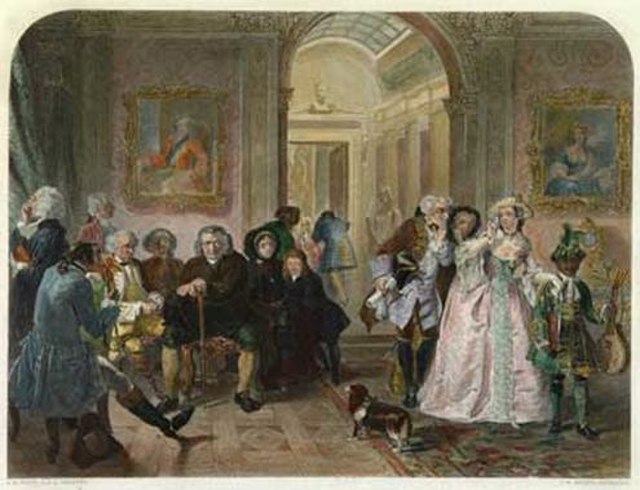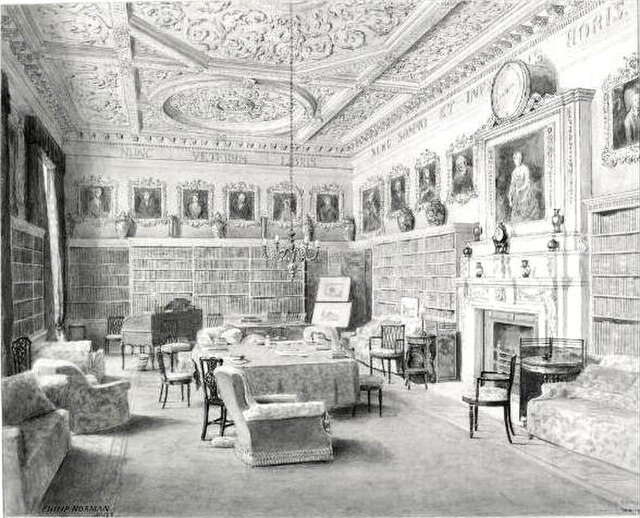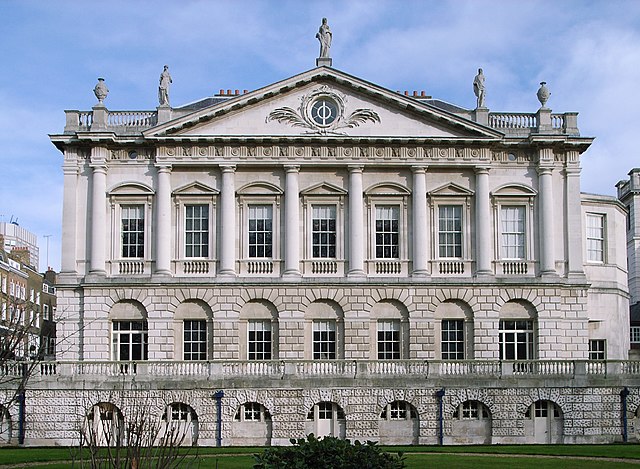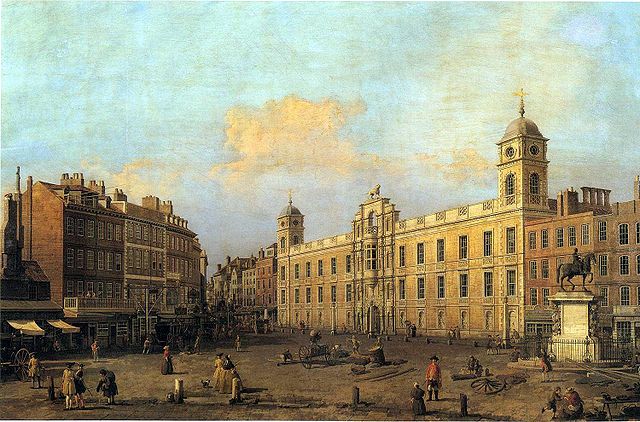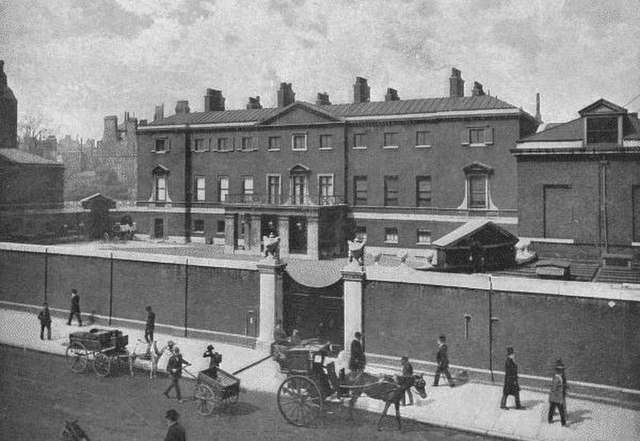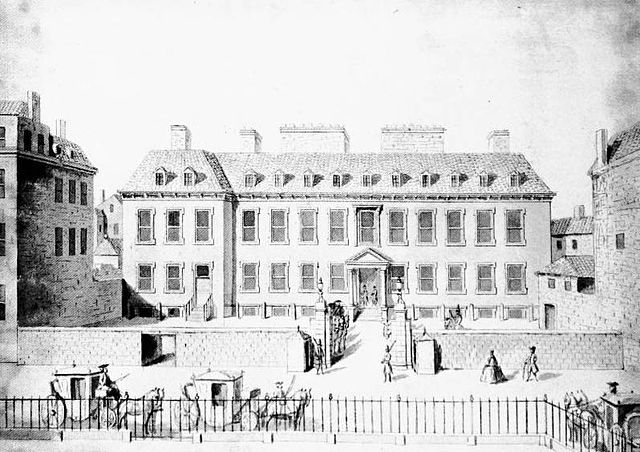Chesterfield House, Westminster
Chesterfield House was a grand London townhouse built between 1747 and 1752 by Philip Stanhope, 4th Earl of Chesterfield (1694–1773), statesman and man of letters. The exterior was in the Palladian style, the interior Baroque. It stood in Mayfair on the north side of Curzon Street, between South Audley Street and what is now Chesterfield Street. It was demolished in 1937 and on its site now stands a block of flats of the same name.
Chesterfield House in 1760, published in Walford's Old & New London (1878)
Staircase that originally came from Cannons, Edgware
Dr. Johnson in the ante-room of Lord Chesterfield. Coloured engraving by E.M. Ward(d.1879) and C.W.Sharpe.
Interior of library of Chesterfield House 1893 by Philip Norman
Townhouse (Great Britain)
In British usage, the term townhouse originally referred to the opulent town or city residence of a member of the nobility or gentry, as opposed to their country seat, generally known as a country house or, colloquially, for the larger ones, stately home. The grandest of the London townhouses were stand-alone buildings, but many were terraced buildings.
Spencer House in St James's, London, one of the last surviving true townhouses still owned by the noble family that built it, the Spencers, although it is now generally leased out commercially. The corresponding country house is Althorp in Northamptonshire.
The Strand front of Northumberland House in 1752 by Canaletto, the townhouse of the Dukes of Northumberland. Note the "Percy Lion" atop the central facade.
Devonshire House, Piccadilly, in 1896
Leicester House on Leicester Fields, 1748



